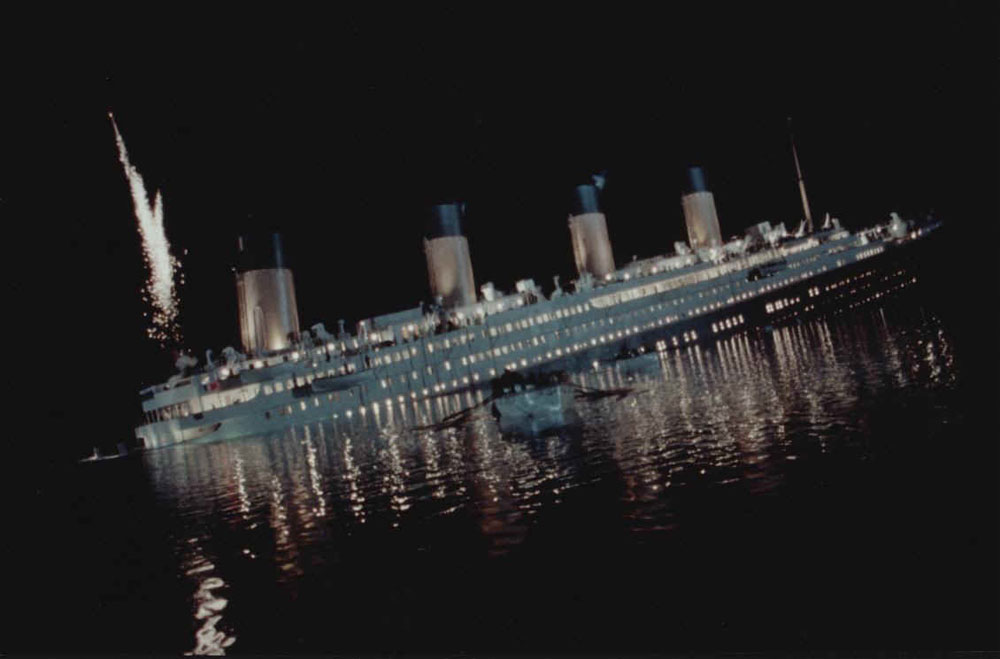The Titanic is in distress
Just weeks before the 100th anniversary of the sinking of the legendary Titanic, American scientists discovered the moon could be an indirect culprit in the disaster.
Those who saw the Titanic movie knew that the giant luxury ship sank on April 14, 1912, by crashing a large iceberg about 640km from Canada's Newfoundland. It sank into the ocean the next morning, carrying the lives of 1,517 people, including Captain Edward Smith.
Smith is the best captain of the White Star Line, which owns the Titanic. He once controlled numerous trains in the north Atlantic. White Star Line was in charge of controlling Tintanic for Smith because the company believed he was experienced and careful.
Donand Olson, an astronomer at the University of Texas in the United States, said Titanic sank on a moonless night, but the ice that hit the ship hit the ship's voyage due to the phenomenon of a full moon from three and a half months earlier.

Illustration of the sinking of the Titanic on the Atlantic Ocean in the morning of April 15, 1912.
'It is possible that the full moon phenomenon on January 4, 1912 created strong waves on the ocean that caused the icebergs to go south. They entered the Titanic's voyage , ' Olson explained.
In the spring of 1912 was the period when the number of ice in the North Atlantic Ocean exploded, but until today the scientific community has not explained that unusual phenomenon. Olson believed that the outbreak of ice in the spring of 1912 was the result of the 'super moon' phenomenon , which means the full moon in the month in which it came closest to the earth.
In the 'super moon' on January 4, 2012, the moon, sun and earth align themselves. This situation makes the sun and the moon increase each other's attraction to the earth. As a result, low tides become lower, while higher tides are higher than normal.
Also, on January 4, 1912, the full moon phenomenon ended exactly 6 minutes before the moon reached the closest point to the globe. At that time, the distance between the globe and the moon reached the smallest value since 796 AD. The unusually short distance between the moon and the earth plus the alignment of the moon, the earth, and the sun caused the force of attraction to the earth to skyrocket, leading to the formation of the great tide.
Despite the impact of extreme waves, the moving ice blocks are relatively slow. The ice sheets formed on April 14, 1912 in the North Atlantic Ocean did not have enough time to enter the Titanic's voyage, Olson and colleagues confirmed.
However, ice cubes formed before the ship crashed were submerged in shallow waters near Newfoundland Island and Canada's Labrado Peninsula. Usually the icebergs sink because they are too heavy. When the mass is small enough during the melting process, they will emerge.
'But when strong tide comes, big ice sheets will rise earlier than usual. Perhaps a lot of giant icebergs all came together on April 14, 1912, thanks to the support of the big tide, ' Olson said.
- Story of 9 people who survived the Titanic disaster
- Found the wreck of 'Titanic Chile' mysteriously after 95 years of disappearance on the seabed
- Those who chew the Titanic wreck
- Prepare to open the Titanic museum
- Precious photos of the Titanic tragedy
- Announcing the first map of the sinking of the Titanic
- The copy of the Titanic will sail in 2022
- Photos never published about life on the Titanic 100 years ago
- The images of the wreck of the Titanic at a depth of 4,000m under the sea have just been taken
- For the first time in life people have the opportunity to see the Titanic under the ocean
- Explore the Titanic's interior
- The largest legacy is left when the Titanic sank into the ocean
 'Fine laughs' - Scary and painful torture in ancient times
'Fine laughs' - Scary and painful torture in ancient times The sequence of numbers 142857 of the Egyptian pyramids is known as the strangest number in the world - Why?
The sequence of numbers 142857 of the Egyptian pyramids is known as the strangest number in the world - Why? History of the iron
History of the iron What is alum?
What is alum?